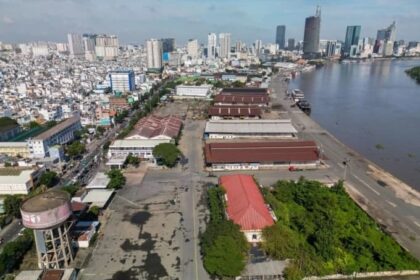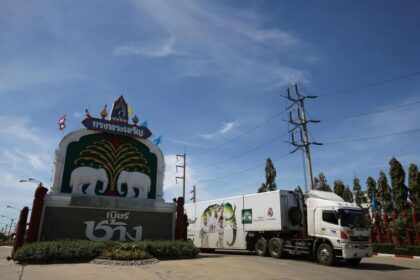Vietnam’s E-Waste Crisis: The Dark Side of Cheap Green Technology
In recent years, Vietnam has witnessed a surge in the popularity of affordable, energy-efficient gadgets such as mini rechargeable fans, portable chargers, and wireless earphones. Marketed as “green technology,” these products promised to help consumers save energy and reduce their environmental footprint. However, their short lifespans and rapid obsolescence have created an unintended consequence: a mounting electronic waste (e-waste) crisis that threatens both the environment and public health.
How Cheap Green Tech Became an Environmental Hazard
Vietnam now generates over 90,000 tonnes of e-waste annually, with a significant portion coming from these so-called green devices. According to experts and recent studies, this figure is expected to rise dramatically, potentially reaching 250,000 tonnes by 2025 as consumer demand for electronics continues to grow. The World Health Organization warns that global e-waste will hit 74 million tonnes by 2030, double the amount recorded in 2014, with Asia as the largest contributor.
While these gadgets are initially celebrated for their low energy consumption, their design often prioritizes cost over durability. Many are difficult or impossible to repair, and their integrated construction makes recycling both costly and technically challenging. As a result, consumers frequently discard them with regular household waste, leading to improper disposal and environmental contamination.
What Makes E-Waste So Dangerous?
Most of these devices contain lithium-ion batteries and hazardous materials such as heavy metals (lead, cadmium, mercury, arsenic) and persistent organic pollutants (POPs) like polychlorinated biphenyls (PCBs) and polybrominated diphenyl ethers (PBDEs). When e-waste is improperly handled—often by informal recyclers using basic manual methods—these toxic substances can leach into the soil and water, posing serious risks to human health and the ecosystem.
Dr. Nguyen Thi Lan, an environmental scientist, explains, “The informal recycling sector recovers only basic materials like iron and copper, leaving behind hazardous residues that contaminate the environment. Children and pregnant women living near e-waste sites are especially vulnerable to these toxins.”
Scientific studies in northern Vietnam have found that people living near informal e-waste recycling sites have significantly higher levels of toxic chemicals in their bodies, including PBDEs and PCBs, compared to those in unaffected areas. Elevated levels of lead and other heavy metals have been detected in drinking water, soil, and even breast milk, raising concerns about long-term health impacts such as developmental disorders, cancer, and neurological damage.
Why Is E-Waste Management So Challenging in Vietnam?
Vietnam’s rapid economic growth and urbanization have fueled a boom in electronics consumption. However, the country’s waste management infrastructure has struggled to keep pace. Most e-waste is handled by the informal sector—small-scale collectors, junk shops, and dismantlers—who lack the technology and resources to safely process hazardous materials. Only about 70 formal companies are licensed to handle e-waste, and their combined capacity is less than 30 tonnes per day, focusing mainly on industrial rather than household waste.
The lack of specialized collection systems and recycling facilities means that valuable materials are lost, and hazardous substances are released into the environment. Many cheap devices are imported unofficially, bypassing regulations and making it difficult to track and manage their end-of-life disposal. Manufacturers, importers, and distributors often avoid responsibility for waste management, leaving the burden on local authorities and communities.
Vietnam’s Law on Environmental Protection mandates Extended Producer Responsibility (EPR), which requires manufacturers and importers to participate in collection and recycling efforts. However, enforcement remains a major challenge, especially for low-cost, unbranded products that dominate the market. The responsibility gap between producers and sellers means that the costs of environmental treatment are unfairly borne by society and the state budget.
The Role of Policy and Regulation
Recognizing the urgency of the problem, the Vietnamese government has introduced new EPR regulations under Decree No. 08/2022/ND-CP, effective from January 2024. These rules require producers and importers to manage the end-of-life of their products, including electronic devices, batteries, and packaging. Companies must either establish their own recycling systems or contribute to the Vietnam Environmental Protection Fund, which supports recycling infrastructure.
Mandatory recycling targets have been set and will increase every three years, pushing businesses to innovate and improve recycling rates. However, industry associations and foreign manufacturers have raised concerns about the high costs of recycling, which could lead to higher product prices and financial strain on businesses. Many argue that the current cost norms are based on insufficient data and do not account for the value of recovered materials, making recycling unprofitable for manufacturers.
One industry representative noted, “Without proper infrastructure and reasonable costs, recycling is not economically viable. The current regulations could mean millions of dollars in annual fees for some companies, discouraging investment in recycling systems.”
The Health and Environmental Toll of E-Waste
The environmental and health impacts of e-waste are well documented. Informal dismantling and open burning of electronic components release toxic fumes and dust, contaminating air, soil, and water. Studies have shown that people living near e-waste recycling sites in Vietnam face higher risks of cancer, respiratory illnesses, and developmental problems.
Children are particularly at risk, as their developing bodies are more susceptible to the harmful effects of heavy metals and organic pollutants. Biomonitoring studies have found elevated levels of lead, arsenic, and other toxins in the blood and hair of children from e-waste areas, indicating ongoing exposure and potential long-term health consequences.
Environmental contamination also affects agriculture and food safety. Toxic substances from e-waste can accumulate in crops and livestock, entering the food chain and posing risks to consumers nationwide. Soil and water pollution from e-waste sites can persist for years, making remediation difficult and costly.
Global Lessons and the Path Forward
Vietnam’s e-waste crisis is not unique. Around the world, only about 9 million tonnes of the 57 million tonnes of e-waste generated in 2021 were properly recycled. The rest ended up in landfills, informal recycling operations, or was illegally exported, exacerbating global environmental problems. Successful strategies from other countries include incentivized recycling programs, stricter regulations on hazardous materials, and public awareness campaigns to promote device repair and refurbishment.
Experts agree that a comprehensive approach is needed to tackle the e-waste problem in Vietnam. This includes:
- Strengthening enforcement of EPR regulations and closing loopholes for unbranded and unofficial imports
- Expanding formal recycling infrastructure and investing in advanced technologies for safe material recovery
- Developing specialized collection systems for hazardous electronic waste, especially in urban areas
- Promoting circular economy models, such as take-back programs and product repair services
- Raising public awareness about the dangers of improper e-waste disposal and the benefits of recycling
- Encouraging international cooperation to address the transboundary nature of e-waste flows
Opportunities and Challenges for the Future
The introduction of EPR regulations marks a pivotal moment for Vietnam’s recycling industry. By holding producers accountable for the full lifecycle of their products, these laws aim to shift the burden of waste management from consumers and local authorities to those who profit from the sale of electronics. However, the transition will not be easy. Building a robust recycling ecosystem requires significant investment, technological innovation, and collaboration between government, industry, and civil society.
There are also economic opportunities in the development of state-of-the-art recycling facilities and the recovery of valuable materials such as gold, silver, and copper from discarded electronics. International companies specializing in environmental technology may find a growing market in Vietnam as the country seeks to upgrade its waste management systems and meet its sustainability goals.
In Summary
- Vietnam faces a rapidly growing e-waste crisis fueled by cheap, short-lived green tech devices.
- Improper disposal and informal recycling release hazardous substances, threatening public health and the environment.
- The government has introduced Extended Producer Responsibility (EPR) regulations to shift waste management costs to producers and importers.
- Enforcement challenges, high recycling costs, and limited infrastructure hinder effective e-waste management.
- Comprehensive solutions include stronger regulation, investment in recycling technology, public awareness, and international cooperation.
- Addressing the e-waste problem is crucial for Vietnam’s environmental sustainability and public health.












